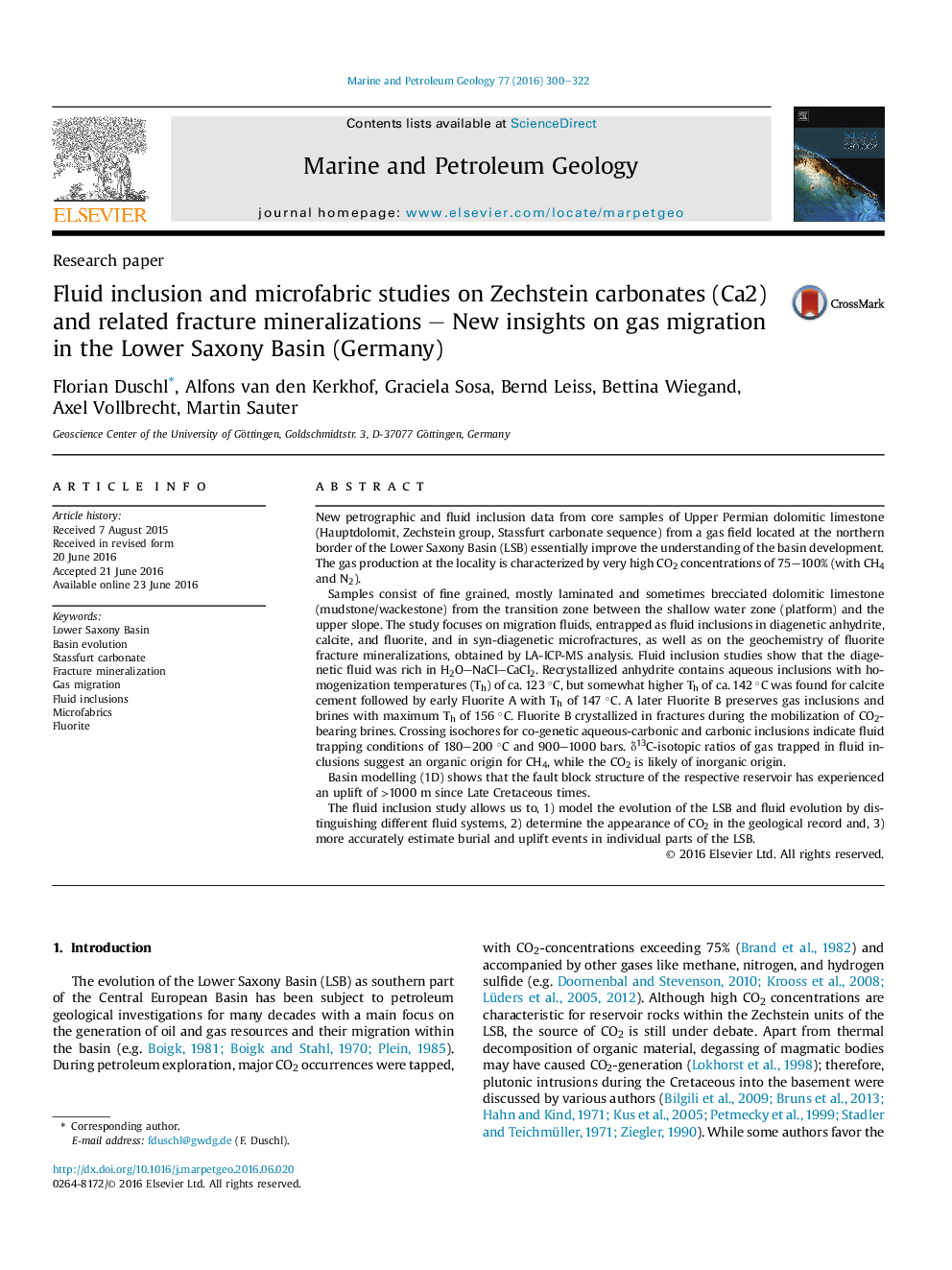| Article ID | Journal | Published Year | Pages | File Type |
|---|---|---|---|---|
| 6434549 | Marine and Petroleum Geology | 2016 | 23 Pages |
â¢We present new data on fluid and gas migration in the Lower Saxony Basin.â¢The focus lies on the evolution of a gas reservoir with a CO2 concentration â¥75%.â¢The appearance of CO2 in the record and the timing of fluid migration were determined.â¢P/T conditions of co-genetic fluid and gas inclusions could be identified.â¢We estimated the amount of burial and subsequent uplift in a fault block related to the CO2 reservoir.
New petrographic and fluid inclusion data from core samples of Upper Permian dolomitic limestone (Hauptdolomit, Zechstein group, Stassfurt carbonate sequence) from a gas field located at the northern border of the Lower Saxony Basin (LSB) essentially improve the understanding of the basin development. The gas production at the locality is characterized by very high CO2 concentrations of 75-100% (with CH4 and N2).Samples consist of fine grained, mostly laminated and sometimes brecciated dolomitic limestone (mudstone/wackestone) from the transition zone between the shallow water zone (platform) and the upper slope. The study focuses on migration fluids, entrapped as fluid inclusions in diagenetic anhydrite, calcite, and fluorite, and in syn-diagenetic microfractures, as well as on the geochemistry of fluorite fracture mineralizations, obtained by LA-ICP-MS analysis. Fluid inclusion studies show that the diagenetic fluid was rich in H2ONaClCaCl2. Recrystallized anhydrite contains aqueous inclusions with homogenization temperatures (Th) of ca. 123 °C, but somewhat higher Th of ca. 142 °C was found for calcite cement followed by early Fluorite A with Th of 147 °C. A later Fluorite B preserves gas inclusions and brines with maximum Th of 156 °C. Fluorite B crystallized in fractures during the mobilization of CO2-bearing brines. Crossing isochores for co-genetic aqueous-carbonic and carbonic inclusions indicate fluid trapping conditions of 180-200 °C and 900-1000 bars. δ13C-isotopic ratios of gas trapped in fluid inclusions suggest an organic origin for CH4, while the CO2 is likely of inorganic origin.Basin modelling (1D) shows that the fault block structure of the respective reservoir has experienced an uplift of >1000 m since Late Cretaceous times.The fluid inclusion study allows us to, 1) model the evolution of the LSB and fluid evolution by distinguishing different fluid systems, 2) determine the appearance of CO2 in the geological record and, 3) more accurately estimate burial and uplift events in individual parts of the LSB.
Graphical abstractDownload high-res image (205KB)Download full-size image
